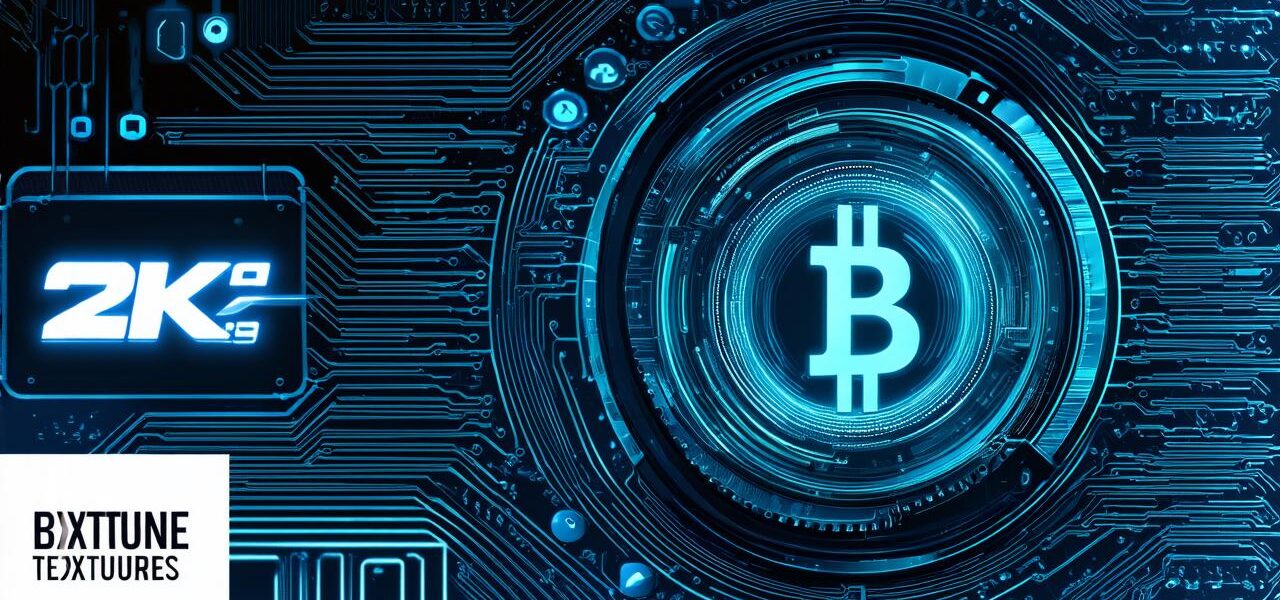
Introduction to Blockchain Development: A Beginner’s Guide
Blockchain technology has gained significant attention in recent years due to its potential to transform various industries such as finance, healthcare, supply chain management, and more. In this article, we will explore the basics of blockchain development, including how it works, why it matters, and provide a step-by-step guide on how to get started with this exciting technology.
What is Blockchain Technology?
A blockchain is a distributed ledger that stores data in blocks linked by cryptographic hashes. Each block contains a list of transactions, a timestamp, and a unique cryptographic hash. The hash links each block to the previous one, creating an unalterable chain of blocks that cannot be tampered with without invalidating the entire network.
Transactions on a blockchain are verified through consensus algorithms, which require a majority of network participants to agree before a transaction can be processed. This makes it difficult for any single entity to control or manipulate the data on the blockchain, increasing security and transparency.
Why Blockchain Technology Matters?
Blockchain technology offers several advantages over traditional database systems, such as decentralization, transparency, security, speed, and cost-effectiveness. Here are some key reasons why blockchain matters:
- Decentralization: By distributing data across a network, blockchain technology reduces the risk of data loss or theft, as there is no central point of failure.
- Transparency: All transactions on a blockchain are recorded in an open ledger that can be viewed by anyone with access to the network. This makes it easier to track and audit transactions.
- Security: Blockchain technology uses cryptography to secure transactions and verify the authenticity of data, making it resistant to hacking and fraud.
- Speed: Transactions on a blockchain are processed quickly and efficiently, without the need for intermediaries or middlemen.
- Cost-effectiveness: Blockchain technology eliminates the need for intermediaries, reducing transaction costs and increasing efficiency.
Blockchain Development 101
Now that we have a basic understanding of what blockchain technology is and why it matters, let’s take a closer look at how to get started with blockchain development.
Step 1: Choose a Blockchain Platform
There are several blockchain platforms available, each with its own features and capabilities. When choosing a platform, consider the specific use case for your project and the technical requirements of your application.
- Ethereum: A popular open-source blockchain platform that enables developers to create smart contracts and decentralized applications (dApps). It has a large community of developers and offers various tools and resources for development.
- Hyperledger Fabric: A permissioned blockchain framework developed by IBM, designed for enterprise use cases where data security is paramount. It enables organizations to build and deploy private, secure blockchain networks.
- Corda: A decentralized blockchain platform developed by Ripple Labs, designed for cross-border payments and financial services applications. It uses a unique consensus mechanism known as “notary nodes” and offers various features such as privacy and scalability.
- EOS: A high-performance blockchain platform that enables developers to build dApps with low transaction costs and fast confirmation times. It uses a delegated proof-of-stake consensus mechanism and offers various tools for development.

Step 2: Learn Programming Languages
To develop smart contracts and dApps on a blockchain platform, you need to have knowledge of programming languages such as Solidity (for Ethereum), Java/Go/Node.js (for Hyperledger Fabric), Kotlin/Java (for Corda), and C++/Rust (for EOS). These languages are designed specifically for building applications on blockchain platforms, and they have unique features and syntax.
bekannten Punkten reduzieren.
Step 3: Understand Consensus Mechanisms
Consensus mechanisms are the algorithms that enable a network of nodes to agree on the state of the blockchain. There are several consensus mechanisms used in blockchain technology, such as:
- Proof-of-Work (PoW): Requires miners to solve complex mathematical puzzles in order to validate transactions and add them to the blockchain. It is used by Bitcoin, Ethereum, and other cryptocurrencies.
- Proof-of-Stake (PoS): Allows validators to participate based on the amount of cryptocurrency they hold. It is faster and more energy-efficient than PoW and is used by Ethereum 2.0, Cardano, and other cryptocurrencies.
- Delegated Proof-of-Stake (DPoS): Uses a unique consensus mechanism known as “notary nodes” to validate transactions and add them to the blockchain. It is faster than PoW and more energy-efficient than PoS, and it is used by Corda and other blockchain platforms.
Step 4: Develop Smart Contracts
Smart contracts are self-executing programs that run on a blockchain network. They enable the automation of complex business processes and the execution of agreements between parties without the need for intermediaries. To develop smart contracts, you need to have knowledge of programming languages such as Solidity or Java/Go/Node.js and understand how to use consensus mechanisms.
Step 5: Test and Deploy Smart Contracts
Before deploying a smart contract on a public blockchain network, it is essential to test it thoroughly to ensure that it works correctly and does not contain any bugs or vulnerabilities. There are various tools available for testing smart contracts, such as Truffle for Ethereum and Fabric for Hyperledger.
Once you have tested your smart contract, you can deploy it on a public blockchain network such as the Ethereum mainnet or Hyperledger’s Fabric network. This makes it accessible to anyone with an internet connection, allowing them to interact with it and use its features.
FAQs:
1. What is the difference between public and private blockchains?
A public blockchain is open to anyone and allows for anonymous participation, while a private blockchain is restricted to a specific group of participants and requires permission to join. Private blockchains are ideal for industries such as healthcare or finance where data security is paramount.
2. How does consensus work on a blockchain?
Consensus algorithms require a majority of network participants to agree before a transaction can be processed, typically through a proof-of-work or proof-of-stake mechanism. Proof-of-work requires miners to solve complex mathematical puzzles in order to validate transactions and add them to the blockchain, while proof-of-stake allows validators to participate based on the amount of cryptocurrency they hold.
3. Can blockchain technology be used for fraudulent activities?
While blockchain technology is designed to be resistant to fraud, it is not foolproof and can still be exploited if proper security measures are not implemented. It is important to ensure that your smart contract includes appropriate security features such as encryption, access controls, and audit trails.
4. What is the difference between a blockchain and a distributed database?
A blockchain is a specific type of distributed database that uses a consensus mechanism to enable secure and transparent transactions. It has a decentralized structure and allows multiple parties to share data and applications without the need for intermediaries. A distributed database, on the other hand, is a database that is spread across multiple servers or systems, enabling better scalability and availability but without the security features of a blockchain.
That’s it! Now you have a basic understanding of how to get started with blockchain development. Happy coding!



